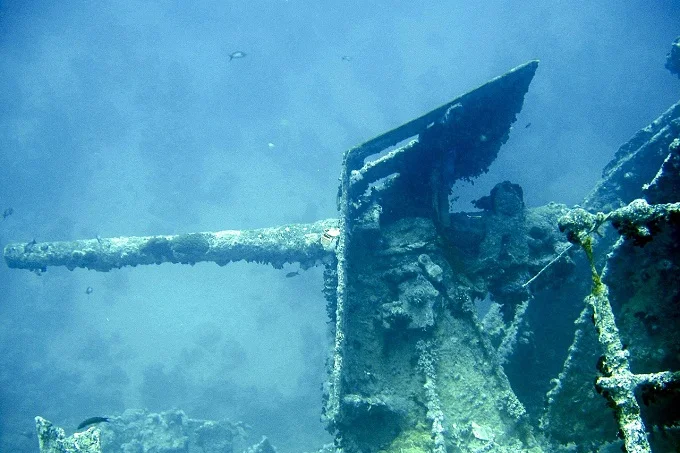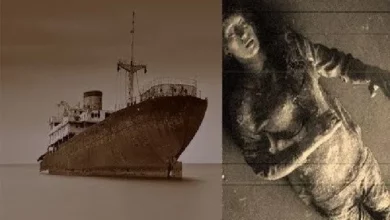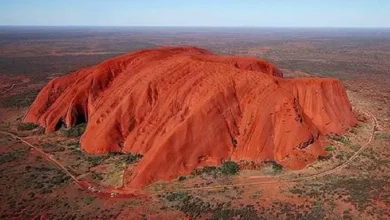The legend of the mahogany ship

A person constantly strives to leave behind a part of history. That is why any ancient artifact found disturbs the minds of all scientists. And time always throws up a lot of strange and mysterious antiquities, which hide very interesting and even unique stories. Some are connected with real events, others seem mystical, and others have unsolved mysteries. However, they are all part of our history, which we must preserve and pass on through generations.
There have been many artifacts throughout human history, and some disappeared without a trace. Others were completely forgotten. Still, others were destroyed on purpose, and some disappeared altogether under mystical circumstances. There are even artifacts that have been missing for so long that they have become legends.
The history of the mahogany ship
Experts know that if the ship sank far from the shore, it is almost impossible to get it. It takes decades to find such vessels. And even then, there is no guarantee that it will still be discovered.
But the story of the mahogany ship is completely different. We are talking about a ship lying far from the bottom of the deep ocean. The object is located in the south-western part of Victoria (Australia), in the harbor under a thick layer of sand. There are legends about this ship. It was constructed of dark wood, presumably mahogany. However, an unambiguous answer has not yet been found. Perhaps the vessel is made of another material, only resembling wood.
The red ship was discovered in 1522 by Portuguese specialists carrying out a secret mission to explore Australia. But after 350 years, the trace of the artifact mysteriously disappeared.
There are no archival documents in favor of the find. The main confirmations are the stories of the local population and whalers who lived 160 years ago. Today, no one has been able to provide the real facts of the existence of the red ship, but no one is able to refute this legend.
From the records of the whalers Smith, Wilson, and Gibbs, scientists learned that in 1836 they were on their whaleboat heading along the coast of South Australia from Belfast to the mouth of the Hopkins River. When the workers wanted to catch a couple of whales, they were suddenly hit by a storm that capsized the whaleboat. Smith died, but Wilson and Gibbs survived.
In complete exhaustion, the sailors made their way to their homes for more than a week. On the way, they saw an ancient ship. They were surprised that the ship was standing in full gear right in the middle of the sand dunes. When the whalers reached Port Fairy and told their captain about the strange find, he wasted no time in searching. Soon the captain found the ship, but it was almost stuck in the sand. After examining the object, the man was surprised – it was something amazing. The ship had the oldest European origin. It was made of a hard dark material resembling mahogany. Captain Mills’ attempt to cut off a fragment with a knife in order to study the material did not lead to anything. The knife slid over him as if on iron.
The captain of the whalers toured the vicinity of Port Fairy and interviewed all the local old-timers. It soon became clear that everyone knew about the red ship. The old natives noted that the ship had been in these sands since time immemorial, and there was a curse on it. Therefore, it was forbidden to approach the ship. And the locals are very obedient about things that are taboo.
The main problem for Mills was to tie the red ship to the terrain because there are always problems with landmarks in the desert. Therefore, in his report, the captain noted that the detected object is located on the Tower Hill line, on a hillock. After that, for some reason, the ship was forgotten for decades.
However, many believed that the wreckage belonged to a research ship of the XV century. However, there was no significant evidence of its existence. Perhaps that is why the story of the red ship was ranked among the legends.
After Europeans’ development and settlement of South Australia, information about the red ship sometimes appeared. From some written accounts of witnesses, it became clear that the ship was of Portuguese or Spanish origin. The caravel made of dark strong material was determined at a glance. Experienced sailors and whalers who saw the ship admired its amazing beauty.
While experts did not show any initiative regarding the ancient artifact, it was swallowed up by Australia’s sand dunes and its contents. And only now, when the red caravel went into the sand, scientists began to conduct search expeditions. However, today the search for the ship has become very tedious. Perhaps he will never be found. Unless they “sift” a huge amount of sand 15 km long, 2 km wide, and 40 m deep.
Specialists can now only hope for persistent adventurers who could sponsor search expeditions in order to find the red ship.
In 1992, the authorities of the state of Victoria reported: whoever finds the remains of the red ship will receive a reward of 250 thousand dollars. However, just a year later, this offer was withdrawn.
In mid-1999, an Australian enthusiast found a piece of a board in the specified area at a depth of several meters. During the study, the wood found was identified as white oak. This species, according to experts, was widely used in shipbuilding and then came to Australia from America or Europe. Scientists did not pay much attention to this find, because almost all ships of that time were made of oak. Then why are experts from all over the world still looking for a mysterious mahogany ship?
According to official history, Australia was discovered by a Dutch traveler in 1606. Then he was able to see the northern point of the Australian mainland. If the ship was found, it could change the whole history of the discovery of the Australian mainland. After all, it is known that in 1521 three Portuguese ships went to explore Australia. One of the ships never returned to the port of his native country.




